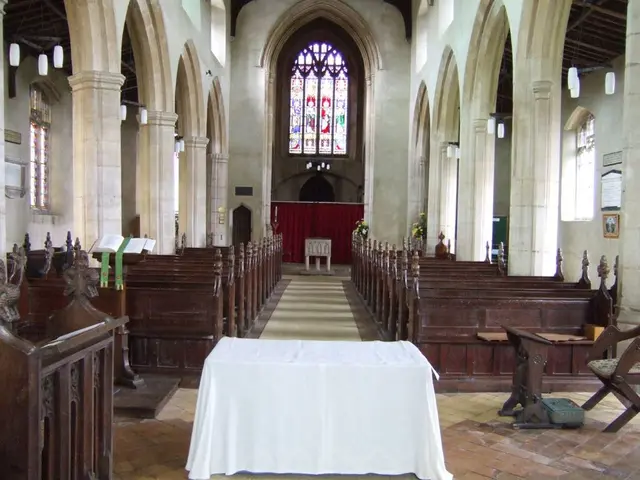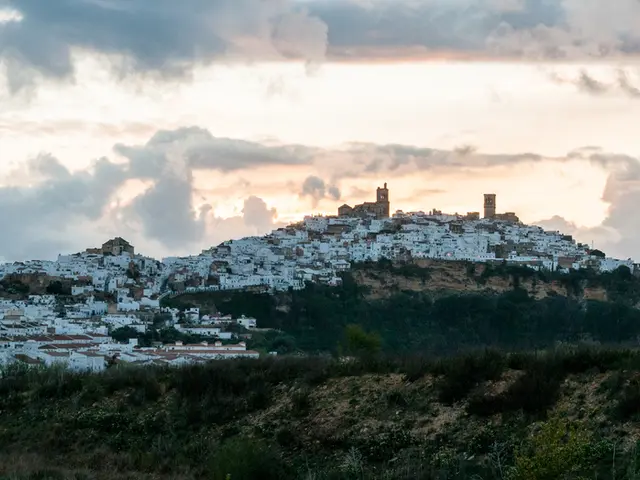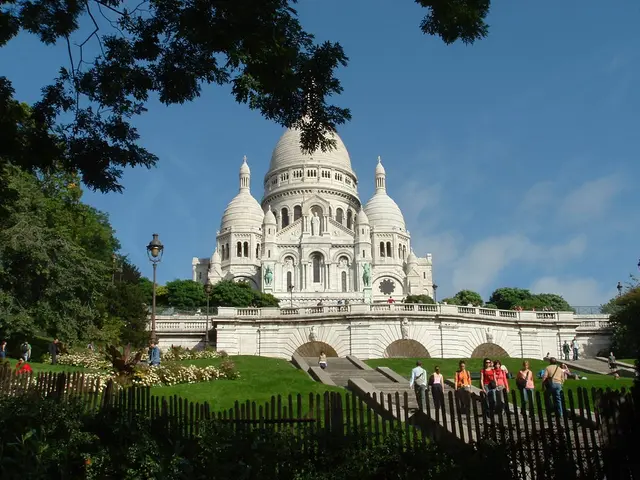Expanded Historical Legacy: The Wandering Venetians Left Lasting Architectural and Religious Influence in the Greek Realm, From Grand Mansions to Faith Traditions
In the heart of the Mediterranean, the impact of the Venetian Empire can still be felt in the rich cultural tapestry of Greece. For centuries, Venice's rule extended to regions such as Corfu, Crete, and the Peloponnese, leaving a lasting impression on the architecture, art, and lifestyle of these regions.
In Corfu, the city's old town is a testament to Venetian influence. The Liston, a long arcade that echoes Venetian architecture, and the Venetian-style fortifications like the Old Fortress, stand as reminders of the 400-year Venetian rule. Across the island, Venetian-era country villas feature Italianate arcaded loggias and simple facades decorated with pilasters.
Crete, under Venetian rule for over 400 years, boasts fortifications like the Fortezza in Rethymnon and the Koules Fortress in Heraklion. These structures reflect Venetian military architecture and have become integral to Crete's landscape. The artistic heritage of Crete includes the Cretan School, which was heavily influenced by Venetian art. Famous icons that combine Byzantine and Western styles are a testament to the cultural exchange during the Venetian period.
The Peloponnese, while less pronounced, still shows traces of Venetian architecture, particularly in fortified towns and ports like Nafplio. The castle of Palamidi, a fortress-like defensive structure overlooking a gulf of the Aegean off the east coast of the Peloponnese, is a reminder of Venetian architecture and a vanished empire in Greece.
The Venetian influence extended beyond architecture and art. In Corfu, local customs and festivals, such as the Corfiot Carnival, have elements that reflect Venetian traditions. In Crete, cultural identity today includes traditions and folklore that have been influenced by the Venetian period, such as the use of Venetian names for certain dishes and the celebration of festivals with Venetian roots.
The Venetian Republic, which extended its empire to areas including the Ionian Sea, the Mediterranean, the Istrian peninsula, Albanian coast, Montenegro shores, Crete, and Cephalonia more than 500 years ago, left visible imprints of its medieval and early-modern influence across Greece. From the boldly colored embroidery on the flowing linen-cotton skirts of Cretan countrywomen to the Renaissance- and Baroque-influenced painting by Greek artists like Panagiotis Doxaras, the Venetian legacy is a rich and enduring part of Greece's cultural heritage.
References: - General knowledge about Corfu's architecture. - General knowledge about Crete's architecture. - General knowledge about Peloponnese's architecture. - General knowledge about the Corfiot School. - General knowledge about the Cretan School. - General knowledge about the Corfiot Carnival. - General knowledge about Cretan traditions. - Not available in the search results; specific details about the Venetian influence on the cultural, social, and economic life of the Ionian island of Zakynthos, the religious imagery on the island of Crete, the education of wealthy citizens of the Ionian island of Zakynthos in Venice, the transformation of the Roman Catholic Church of the Transfiguration of the Saviour in Messenia, the influence of Venetian lace patterns on Cretan embroidery, and the New Fortress in Corfu Town.
In Corfu's rural life, Venetian-era home-and-garden architecture with Italianate arcaded loggias and simple facades decorated with pilasters can still be found. Traveling across Greece, one can encounter the legacy of Venetian influence, as evidenced in the Cretan School's artwork, which was heavily influenced by Venetian art and can still be seen in beloved festivals like the Corfiot Carnival and Cretan traditions today.




